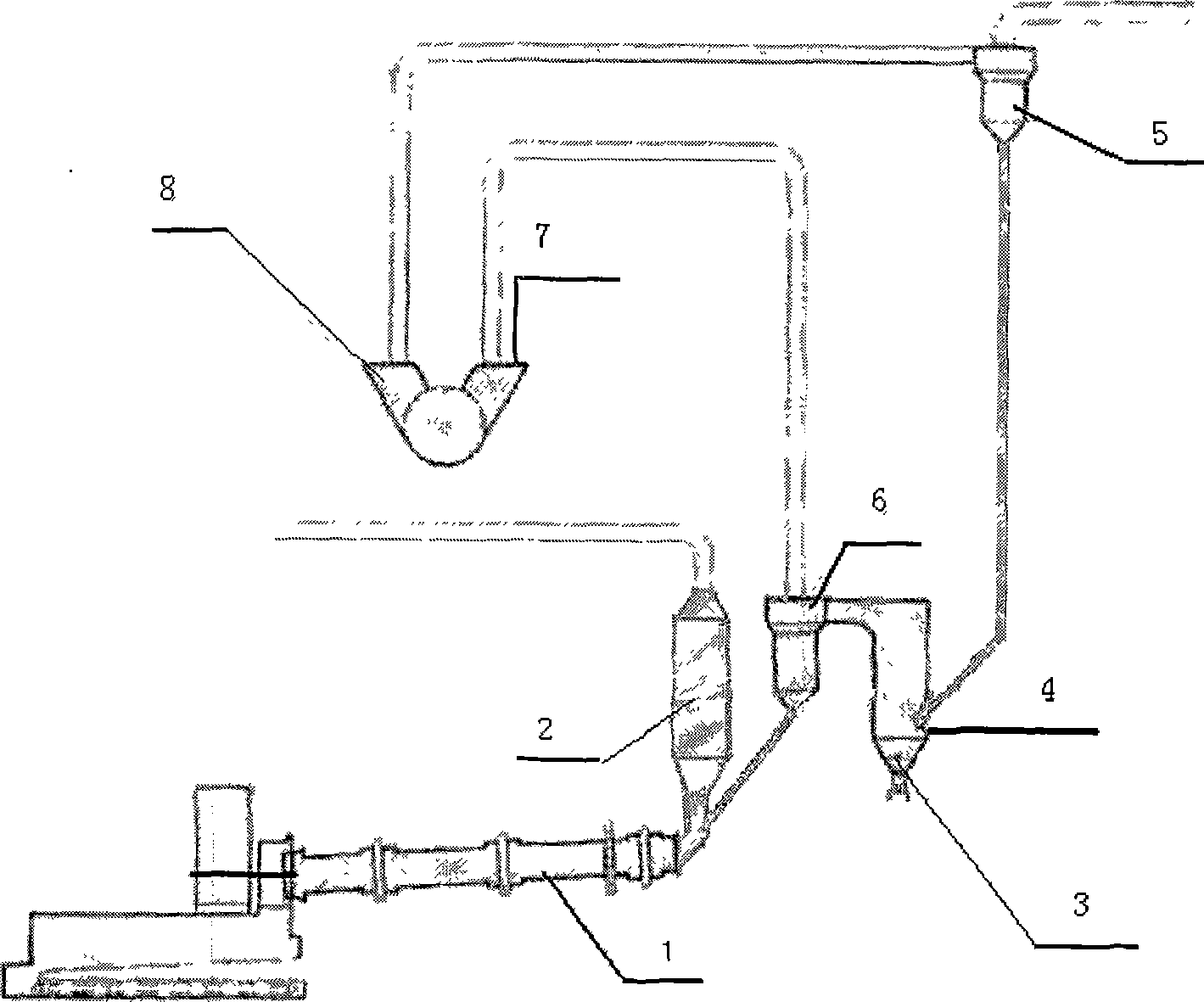Method for improving SO2 concentration in acid making technique with decomposition of calcium sulphate
A calcium sulfate and process technology, which is applied in the production process field of using calcium sulfate to produce sulfuric acid and cement clinker, can solve the problems of complex production control process, reduced calcium sulfate decomposition rate, poor heat transfer effect, etc., and achieves a stable sulfuric acid production system. , Improve the concentration of SO2, the effect of stable production process
- Summary
- Abstract
- Description
- Claims
- Application Information
AI Technical Summary
Problems solved by technology
Method used
Image
Examples
Embodiment 1
[0023] The phosphogypsum obtained from the production of wet-process phosphoric acid, such as phosphogypsum containing 9-13% of external moisture, is directly added to the rotary hammer drying commonly used in clinker firing in cement plants from the feeding port 7 In the crusher 8, the exhaust gas below 1000°C from the calciner 3 is separated in the cyclone preheater 5 after heat exchange through the pipeline and the cyclone preheater 5, and the separated materials enter the calciner 3, Using CO produced by pulverized coal combustion as a reducing agent, calcium sulfate is reduced and decomposed into calcium sulfide; the solid materials separated by the cyclone separator 6 all enter the rotary kiln 1, and react in the kiln to obtain SO 2 Gas, CaO, and solid materials are decomposed by further raising the temperature and react at 1300-1450°C to obtain cement clinker. The gas out of the calciner and the rotary kiln is heat-exchanged with the raw material through the suspension ...
Embodiment 2
[0025] In implementing example 1, 3-calcining furnace and 6-cyclone type separator are replaced with rotary kiln, and other is with implementing example 1.
Embodiment 3
[0027] After drying the calcium sulfate to obtain calcium sulfate hemihydrate or calcium sulfate anhydrous, add other raw materials to meet the requirements of the cement clinker formula and mix them evenly, then add them to Example 1 or 2, and add one or more cyclone preheaters 5 is realized by replacing the method of drying crusher 8.
PUM
 Login to View More
Login to View More Abstract
Description
Claims
Application Information
 Login to View More
Login to View More - R&D
- Intellectual Property
- Life Sciences
- Materials
- Tech Scout
- Unparalleled Data Quality
- Higher Quality Content
- 60% Fewer Hallucinations
Browse by: Latest US Patents, China's latest patents, Technical Efficacy Thesaurus, Application Domain, Technology Topic, Popular Technical Reports.
© 2025 PatSnap. All rights reserved.Legal|Privacy policy|Modern Slavery Act Transparency Statement|Sitemap|About US| Contact US: help@patsnap.com

